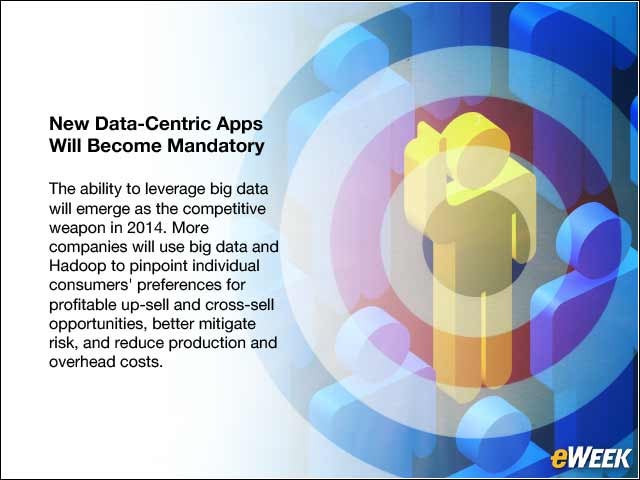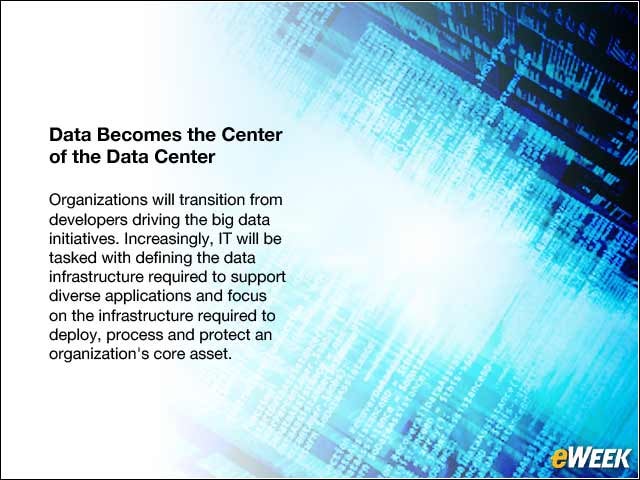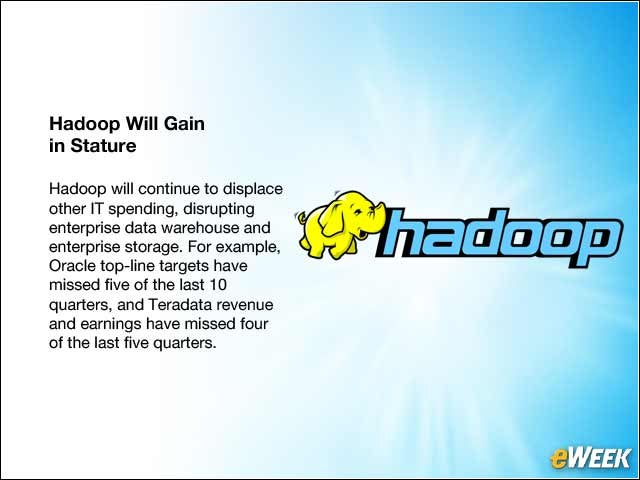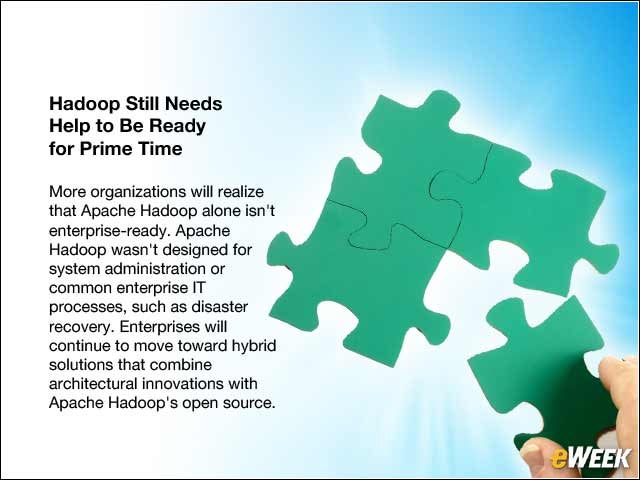eWEEK content and product recommendations are editorially independent. We may make money when you click on links to our partners. Learn More.
2SQL Holds Biggest Promise for Big Data
3Yet SQL Poses Challenges
4Authentication Is Top Data Security Issue
5Data Errors Become Learning Opportunities
Data errors will occupy organizations in 2014. Do data errors indicate issues with underlying source systems? Are data errors the result of ETL issues that are introducing biases in downstream analysis? Do data errors indicate definitional differences or a lack of consistency across departments and business segments? 2014 will see the embracing of data anomalies.
6Emergence of Operational Hadoop
2014 will see a dramatic increase in production deployments of Hadoop across industries. This will reveal the power of Hadoop in operations where production applications combine analytics for measureable business advantage in apps such as customized retail recommendations, fraud detection and using sensor data for prescriptive maintenance.
7More Data Warehouses Will Deploy Enterprise Data Hubs
8New Data-Centric Apps Will Become Mandatory
9Data Becomes the Center of the Data Center
10Search Emerges as the Unstructured Query Language
There were a large number of SQL initiatives for Hadoop in 2013, and 2014 will be the year that the unstructured query language comes into full focus. Integrating search into Hadoop provides a simple intuitive method for any business user to locate important information. Search engines also are the core for many discovery and analysis applications, including recommendation engines.
11Hadoop Will Gain in Stature
12Hadoop Still Needs Help to Be Ready for Prime Time
More organizations will realize that Apache Hadoop alone isn’t enterprise-ready. Apache Hadoop wasn’t designed for system administration or common enterprise IT processes, such as disaster recovery. Enterprises will continue to move toward hybrid solutions that combine architectural innovations with Apache Hadoop’s open source.











